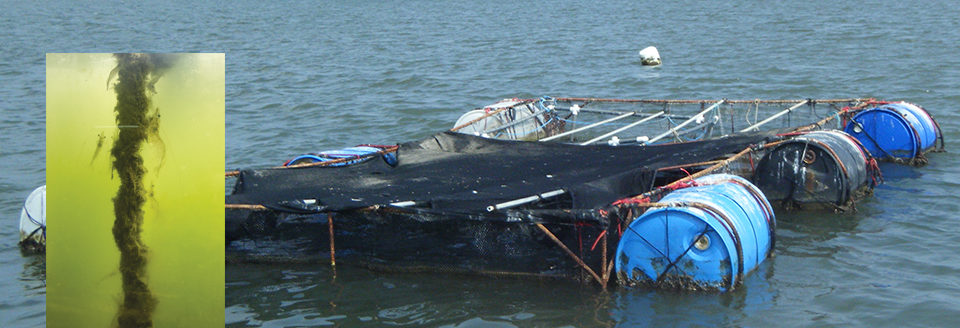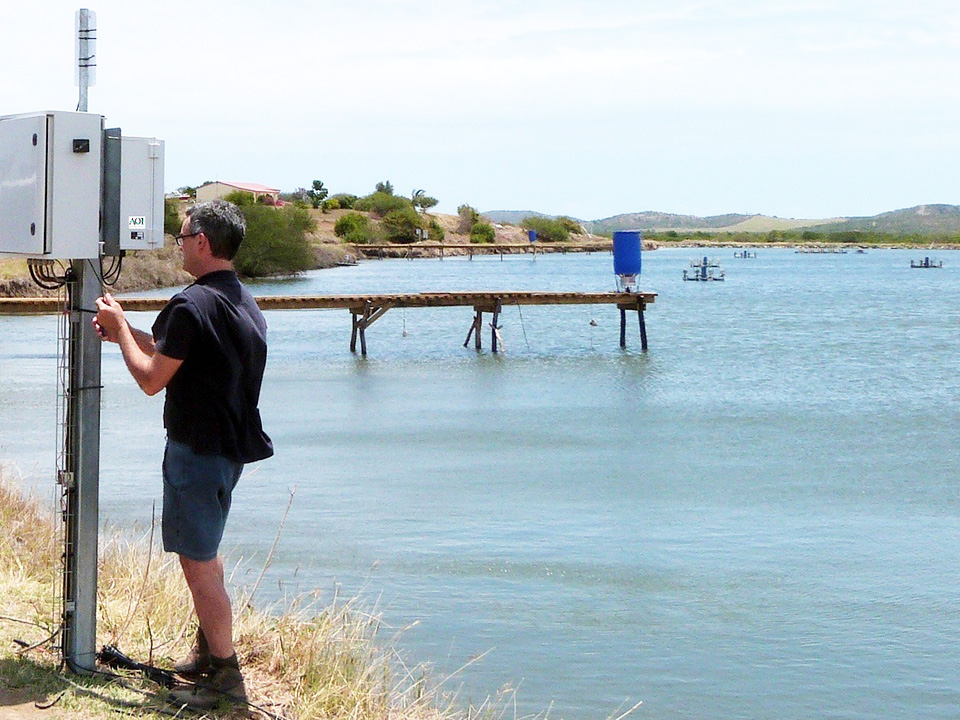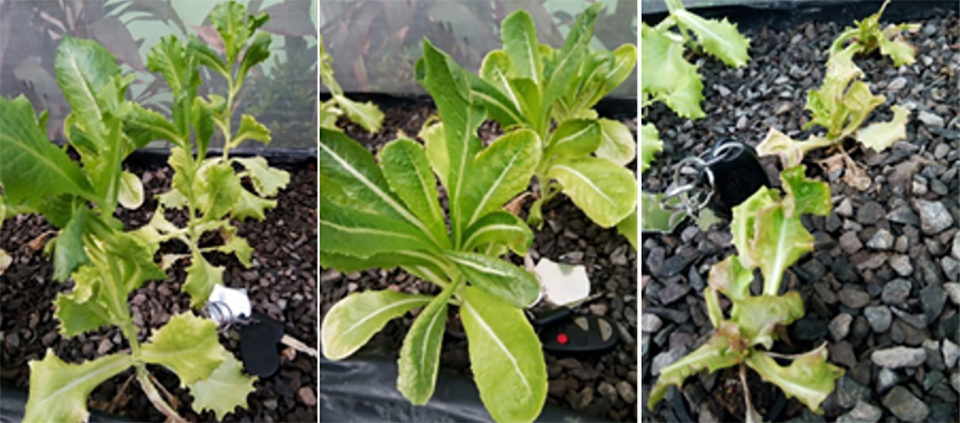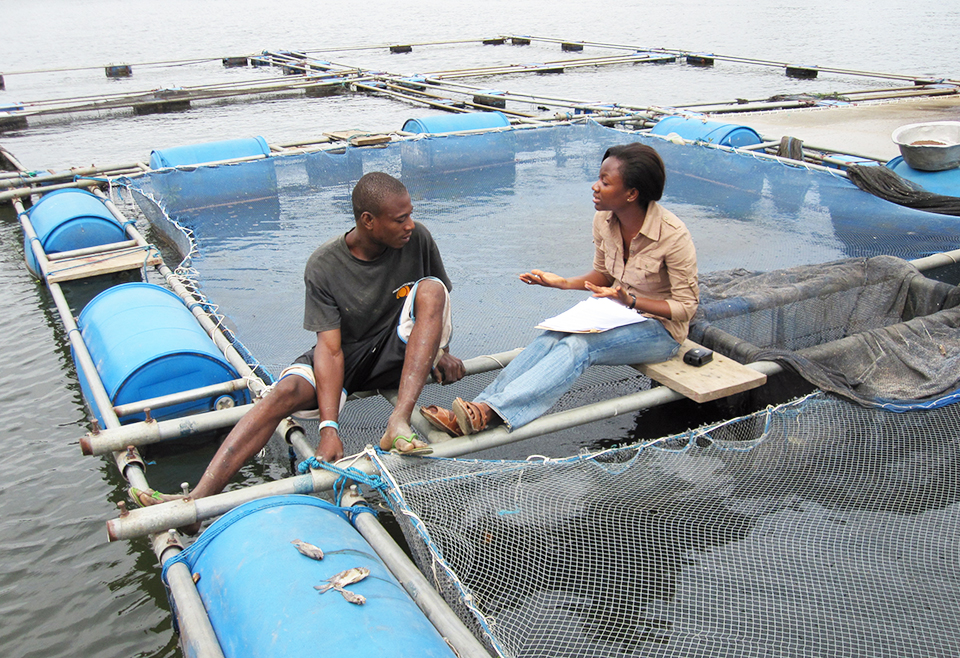With flowing water and extra surfaces, cages can support high numbers of shrimp

In research funded by the Development Marketplace Program of the World Bank, the author examined the validity of growing shrimp in floating cages located in the Gulf of Nicoya off Costa Rica. The shrimp farming could provide coastal populations with alternative sources of income while also reducing pressure on natural resources.
Shrimp, a favored fishing and pond-farming species in the region, was selected for culture largely because postlarvae are easily available from laboratories.
Cage siting, construction
Cage sites should have good-quality moving water but no strong currents, and be close to where shrimp are normally fished, an indication of adequate environmental conditions. Good access to the facilities and around-the-clock care are very important. Losses due to theft, vandalism and poor cage maintenance are the main obstacles to adoption of cage culture. Distance from the shore and community are more relevant for those who do not own motor boats.
Several cage designs were tested. The requirements for small cages with volumes to 20 cubic meters are not very stringent, although the cages must be strong enough to withstand currents and at least 0.7 meters deep. Preferably, cages are topped with shading net to keep shrimp out of the sun and relaxed. As shrimp spend most of their time walking on the bottoms or sides of the cages, extra false floors or other surfaces are added to increase stocking density.
Round, rectangular and diamond-shaped cages made of polyvinyl chloride (PVC) pipe, galvanized pipe, bamboo canes or wood all proved adequate, although each type presented some limitations. PVC pipe was the preferred structure material. Also, flexible cages with a “frame” of rope were successfully built but require more skill in their management.
Fouling and clogging of the cage nets must be controlled, and organic material must not accumulate at the bottom. Regular cleaning also helps to eliminate crabs and other predators that enter the cages when small and grow rapidly once inside. Weekly checks confirm overall cage integrity. Double netting or strategies to divert water should be used if water often carries tree branches or other material that can damage the cages.
The net used to make the cages varies with growing stage. For shrimp postlarvae, anti-aphid netting with 100 divisions/cm or “hapa” net with 1-mm mesh were used, but any good cloth may do, since small postlarvae cages up to 1 cubic meter in volume should be protected within larger grow-out cages.
For the nursery stage with shrimp weighing from about 0.1 to 1.0 grams, a closely knitted plastic net offering 80 percent shade or strong plastic mosquito-type net were used with good results, also keeping small nursery cages within larger growout cages.
The third stage is grow-out, in which shrimp greater than 1 gram in weight are kept in larger cages made with multi- or monofilament nylon fishing net of the smallest possible mesh. Knitted plastic shading net also proved to be surprisingly strong.
Anchoring
The easiest anchors for small cages are concrete blocks or half to full drums with iron handles covered with plastic hose. Iron spikes 0.5 meters long protruding from the concrete were also used to improve anchoring capacity.
The major determinants for anchoring are the strength of the currents and the number, size and water resistance of the cages. The use of submerged lines between anchors, from which several cages may be tied using two ropes per cage, has proven very effective. The transport of anchors from shore to site was facilitated by floating them with plastic drums.
Stocking density
With flowing water and extra surfaces, cages can support high numbers of shrimp. For postlarval stages, density can be 20,000 post-larvae per cubic meter. In early nursery stages, densities can reach 5,000 shrimp per cubic meter. During advanced grow-out, density can be up to 500 shrimp per cubic meter. Thus, production up to 10 kg per cubic meter can be reached for 20-gram shrimp.
However, stocking density varies for different conditions. A relationship between temporary carapace lesions and high density was observed during periods of decreased water salinity. Some growers used mashed garlic mixed with feed or in the water to combat these lesions, which eventually disappeared on their own with molting. No other external inputs besides feed were used, making this a very low-input activity.
Feeding
During the postlarval stage, shrimp are fed one month with powdered commercial shrimp feed with 35 percent protein content. Initially they receive 20 percent of their body weight in feed in several daily feedings. As they approach 1 gram in weight, the daily ration is reduced to 3 or 4 percent of body weight, and shrimp are gradually weaned from this diet to raw fish.
Shrimp grow well if fed only ground or finely minced raw fish meat or even residues, including heads, tails and gills. Using fresh feed is possible in cages because of the high water exchange rates.
While powdered feed is scattered on the water surface within rims that keep the powder from leaving the cage, other feeding must use pans to avoid feed waste and cage pollution. The pans also allow monitoring of feeding behavior. Proper feeding is very important to decrease cannibalism and variability in size.
Feeding shrimp with “trash” fish and other residues makes good use of a byproduct of fishing and keeps down costs – making cage culture of shrimp profitable at a small scale. Early trials using commercial shrimp feed throughout the growing cycle proved uneconomical. Of course, the availability of trash fish or residues can be variable, and it should never reach the point where pelagic fishing is practiced to feed caged shrimp.
Growth, production approaches
Growth rates were very similar to those on land, often greater than 1.1 grams per week, allowing full cycles to 12-gram shrimp within three months after the nursery phase. Besides growing shrimp from postlarvae, two other options have been implemented.
Some shrimp were grown only for live bait. Sizes as small as 7 grams can be sold in quantities of several hundred per day, adding to income. In this fashion, some producers chose to use locally obtained postlarvae or juvenile white shrimp of the species P. occidentalis or P. stylirostris, which are abundant near mangroves.
The other production option, which seems to have the greatest potential for medium- to large-scale operations, was to transfer shrimp harvested from ponds into the floating cages. Beginning with animals of 12- to 14-gram weight, shrimp up to 30 grams can be obtained in a cost-efficient manner, avoiding the risks of biotic stress and hypoxic conditions in land ponds when large sizes are approached. These shrimp are fed a mix of commercial feed and fresh fish meat.
Growing bivalves together with shrimp was tried following multitrophic and other cropping concepts to reduce pollution. Pacific oysters (Crassostrea gigas) and a local mussel (Nitella guyanensis) were successfully grown in hanging bags within the shrimp cages. Bivalves do not compete with shrimp for resources, while they filter organic material in the water and provide abundant surfaces on which shrimp can walk.
Fishing improves noticeably around the shrimp cages because both live shrimp and the feed used attract all sorts of fish. Yet, after several years of working with these systems, no attack on shrimp cages from predators has been reported.
Returns
Farmed shrimp have farm gate prices of around U.S. $4/kg for whole 12-g shrimp. Larger shrimp demand far higher prices. Postlarvae are available at around $4/1,000 for low quantities. Shrimp mortality of about 40 percent while growing must be assumed.
Shrimp for live bait sell at $6-10/100, almost without concern for size. Even 5-g shrimp are commonly sold at that price, resulting in a price near $12/kg – obtained after only two months of post-nursery culture. Of course, there is a limit to the use of shrimp as live bait.
Using data for five production cycles from postlarvae to 12-g shrimp and adding extra income from selling shrimp for live bait, basic financial analyses indicate net returns well over 100 percent in four months. Investment costs, which include materials, labor, commercial feed and postlarvae, vary mainly according to the materials purchased for cages. Clearly, depending on the start-up costs involved, scale of the operation and how labor costs are considered, raising shrimp in cages can be quite profitable.
Perspectives
Much of what has been tried must be improved over time or adapted as local conditions demand. Shrimp cage technology can be quite scale-insensitive and may lend itself to larger-scale production, thus representing an opportunity to complement or eventually even substitute for pond production.
(Editor’s Note: This article was originally published in the July/August 2010 print edition of the Global Aquaculture Advocate.)
Now that you've reached the end of the article ...
… please consider supporting GSA’s mission to advance responsible seafood practices through education, advocacy and third-party assurances. The Advocate aims to document the evolution of responsible seafood practices and share the expansive knowledge of our vast network of contributors.
By becoming a Global Seafood Alliance member, you’re ensuring that all of the pre-competitive work we do through member benefits, resources and events can continue. Individual membership costs just $50 a year.
Not a GSA member? Join us.
Author
-
Ricardo Radulovich, Ph.D.
University of Costa Rica
Puntarenas, Costa Rica[116,101,110,46,97,114,117,116,108,117,99,105,114,97,109,64,104,99,105,118,111,108,117,100,97,114,46,111,100,114,97,99,105,114]
Tagged With
Related Posts

Innovation & Investment
Acoustic control improves feeding productivity at shrimp farms
In systems recently developed for shrimp farms, passive acoustic-based technology enables sensor-based control of multiple automatic feeders. Improved growth and feed conversion have been recorded at commercial farms using the technology.

Innovation & Investment
Experimental aquaponics system in Costa Rica
This study evaluated the performance and production of channel catfish and freshwater prawns and three varieties of lettuce – American, Romaine and Rose – in a research aquaponics system.

Health & Welfare
10 paths to low productivity and profitability with tilapia in sub-Saharan Africa
Tilapia culture in sub-Saharan Africa suffers from low productivity and profitability. A comprehensive management approach is needed to address the root causes.

Health & Welfare
A look at tilapia aquaculture in Ghana
Aquaculture in Ghana has overcome its historic fits and starts and is helping to narrow the gap between domestic seafood production and consumption. Production is based on Nile tilapia.



